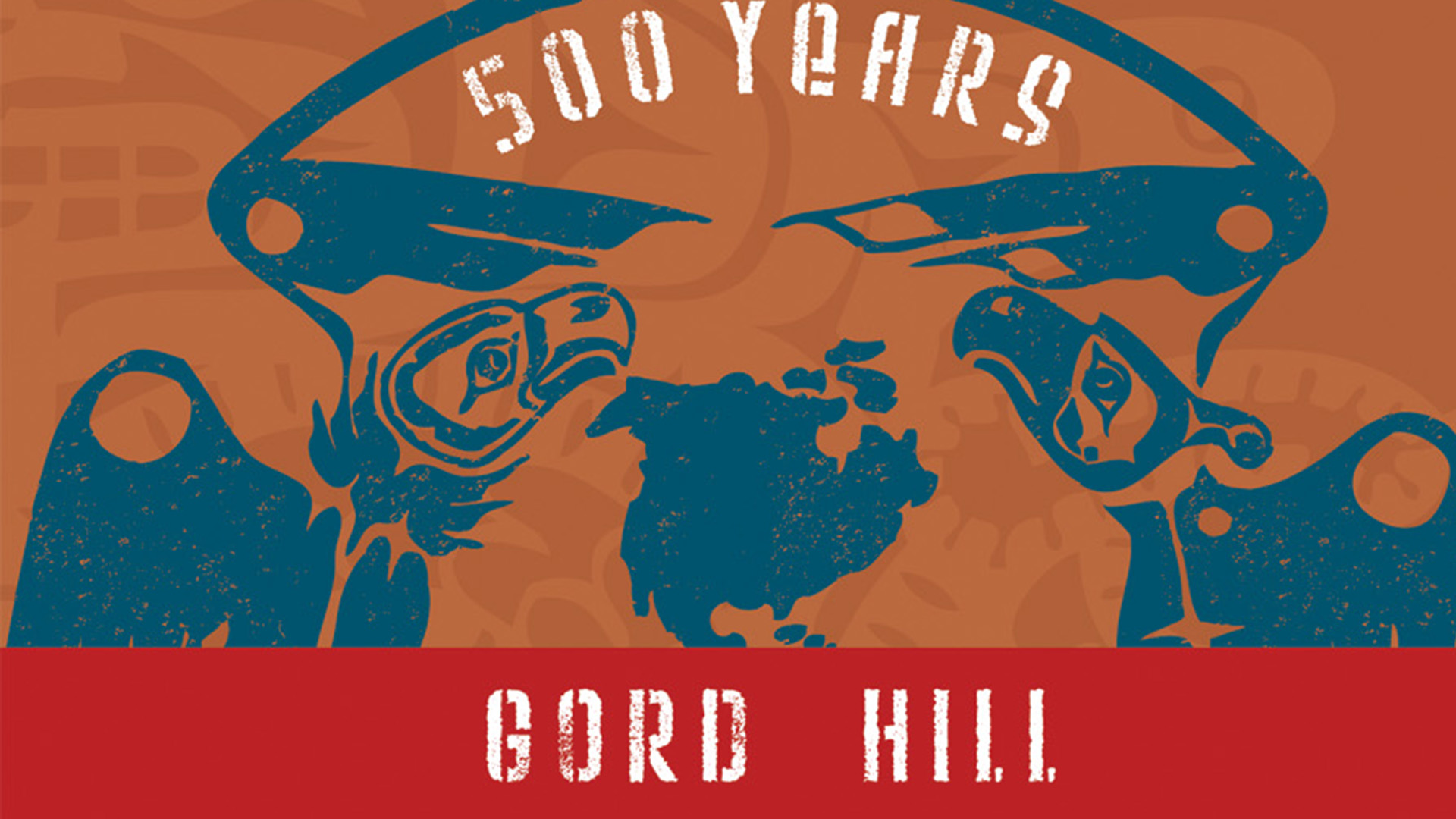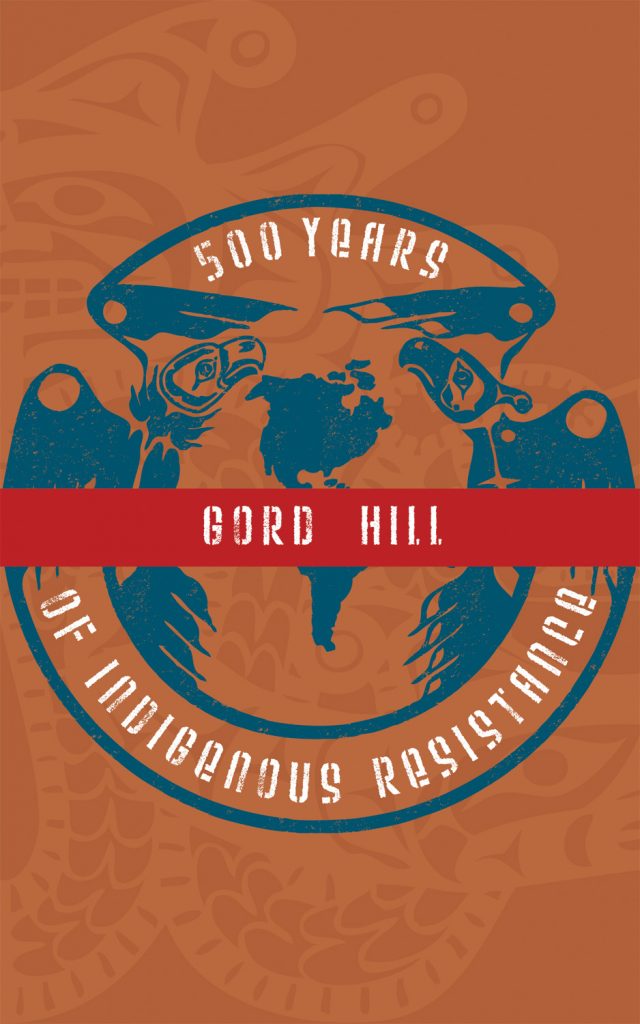Gord Hill, Indigenous Activist and Author of “500 Years of Indigenous Resistance”
By Joan Brunwasser
OpEdNews
May 24, 2010
My
guest today is Gord Hill. He is a member of the Kwakwaka’wakw nation
and the author of 500 Years of Indigenous Resistance. Welcome to
OpEdNews, Gord. This is the first work I’ve read by an Indigenous
individual. So, I hope you will forgive my unfamiliarity. Before we get
started, please clarify something for me. It says on the book jacket
that your nation is on the Northwest Coast and you write about the
colonization of the Americas. Do you consider yourself Canadian,
American, or neither, just a member of the Kwakwaka’wakw nation?
I
consider myself an Indigenous person from the Kwakwaka’wakw nation,
which is how I identify with Indigenous people across the Americas. I do
not consider myself a Canadian as this is a colonial identity which
has been created through violent colonization and oppression.
Let’s
talk about those colonization efforts. Howard Zinn’s A People’s
History of the United States gave me my first taste of this subject. He
does a number on Christopher Columbus. But your book goes much more in
depth. How did you organize and such a massive amount of information
and craft it into an intelligible document? And didn’t you find that
daunting?
Intelligence is the gathering of
information from various sources, subject to analysis and comparison,
in order to derive the clearest picture possible of an area, situation,
person, etc. Organizing the information of centuries of Indigenous
struggle can be difficult, but the historical story itself helps
because you have a basic chronology that serves as a guide. In many
ways, the story is there, it’s a matter of finding the incidents,
personalities and patterns etc., that best relate what happened. In
anti-colonial historical writing, this task is more difficult because
the voices of the colonized are most often erased, distorted, and/or
interpreted by the colonizer. I didn’t find it daunting so much, mostly
because I didn’t realize the extent of research, organization, etc.,
that would ultimately be necessary.
How long did it take you to put this all together?
It was written during the period 1991-92, and was originally published
in 1992, so that’s quite awhile ago. It probably took a few months
altogether.
Interesting, I would
have expected much longer. I understand that the contents of your book
first appeared in the revolutionary Indigenous newspaper OH-TOH-KIN.
Why has it taken so long for it to capture attention beyond Indigenous
circles?
To some extent it was being distributed
in non-Native movements throughout the 1990s after Arm the Spirit
published the article as a pamphlet, but that is now out of print. Arm
the Spirit was an anti-imperialist group based in Toronto that no
longer exists.
How did you and PM Press get together? I guess my question is, why now after all this time?
I first met Ramsey, who runs PM Press, when he lived in Edinburgh,
Scotland. At the time, he was running an anarchist distribution of
books, zines and records, and before he had set up AK Press. I think
they found the original pamphlet, produced by Arm the Spirit, to be a
good seller and when it was out of print, he wanted to re-publish it.
What kind of response have you had since the re-publishing?
Right now, I am more focused on the 500 Years of Resistance Comic Book,
published in April 2010, and doing promotional work on it. I haven’t
noticed any particular response other than some people are glad it is
once again available.
You also go by the name Zig Zag. Where did it come from and what do you use it for?
Zig Zag was a ‘code name’ I used during the 1999 Cheam fisheries
dispute when a Native Youth Movement security force helped Cheam
fishermen oppose the Department of Fisheries and Oceans (DFO)
enforcement of salmon fishing on the Fraser River. Code names aren’t
very useful once they’ve been used in such a campaign but I continued
to use it as a ‘pen name’ afterwards.
You
are an artist of breadth and talent. Can you tell our readers a bit
about the various art forms you’ve been involved in over the years?
Most authors/historians aren’t so versatile.
I do a lot of black and white graphics for zines, magazines, and
journals, as well as logos for groups. This also includes comics. I do
some painting on canvas, mostly for sale, as well as lots of banners for
rallies. I carve rattles, masks, miniature masks, plaques, as well as
cedar boxes. I also silkscreen t-shirts, patches, etc.
Where did all this creativity come from? Did you go to art school?
No, I took some art classes in high school but that’s it. For carving, I
spent about a year in Alert Bay, a community and reserve on north
Vancouver Island where most of my family live. For silk-screening, I had
a job in a screen printing factory where I learned some of the basics,
then friends showed me how to make screens, etc. at a do-it-yourself
level.
You sound like a natural.
Can you tell us a bit about your youth – where you grew up, what it was
like? I’m pretty certain it was a bit different from my own youth in
suburban Chicago.
I was born in the
south-central interior of BC [British Columbia] in 100 Mile House where
our family lived for a few years. We lived in a rural area where my
dad had a small mill operation. I remember bears regularly coming
around the house. Then, we moved back to my mother’s territory on north
Vancouver Island, including Port Hardy, Fort Rupert (a reserve where
we lived with my grandfather, Jonathan Hunt), Alert Bay, and Campbell
River. This was all by the time I was in grade 5. Then we moved to the
lower mainland and suburbs of Vancouver, including White Rock and
Surrey.

When I was 13-14, I joined the army cadets which I
stayed in for 4-5 years. I took many courses, including small arms,
fieldcraft, first aid, basic parachutist, and arctic indoctrination.
When I was 18, me and my mother moved to east Vancouver, and I joined
the army reserves for about a year. At this time, I began listening to
anarchist punk music and going to shows, which influenced my thinking
and beliefs. Then I quit the military, which I had planned on making a
career of in the regular forces. I first became involved in an El
Salvador solidarity group, which at the time was in the midst of a
guerrilla struggle to overthrow a right-wing fascist government. As my
politicization continued, I began studying anarchism and publishing a
zine entitled ‘endless struggle’.
You live in two worlds. Can you tell us what that’s like?
I think indigenous people generally live in two worlds under
colonization, that of the indigenous and that of the colonizer. This is
very clear in colonial states such as Canada in which there is a
separate set of laws for indigenous peoples–the 1876 Indian Act– which
establishes a separate system of laws and regulations for controlling
and managing indigenous peoples. Until the 1990s, the apartheid regime
of South Africa was another example of this.
Under this
apartheid system, indigenous peoples continually live in ‘two
worlds’–that of the indigenous and that of the colonizers. As a
result, indigenous peoples are aware of this ‘other’ society, while the
non-Native population is largely ignorant of the indigenous ‘world’ and
life conditions. Non-natives may even live next to a Native reserve
and not even know it exists, never mind the conditions existing within
it. This apartheid basically creates conditions of extreme ignorance
among non-Natives, which are easily exploited by the rulers to further
divide and antagonize relationships between both.
For myself, I
am involved to some extent in both indigenous resistance as well as
general social resistance. I was largely politicized through the
anarchist movement, so I maintain sympathy, communication, and, at
times, participation in this movement, in anti-capitalist resistance. On
the other hand, in order to be engaged in indigenous anti-colonial
resistance, I must choose at times where my priority is to be focused.
To be involved primarily in anarchist struggles, anti-capitalist
movement, etc., means neglecting the indigenous movement, because large
numbers of indigenous people do not want to be involved in non-Native
movements, understably and in my opinion, correctly so.
Overall,
especially in urban areas, it is a struggle for indigenous peoples to
maintain their autonomy and independence, to self-organize as
indigenous peoples, to maintain culture and social relationships, etc.
Yet this is necessary in order to advance the indigenous movement. And
yet, at the same time, alliances must be made with non-Native movements.
I think Native peoples are more capable of establishing such alliances
because of their exposure to both ‘worlds’, whereas non-Natives don’t
really know where to begin due to their ignorance and the conditions of
apartheid.
In addition, being aware of this duality can also
enable indigenous people to better use, for example, the system’s
technology, lines of communication, or even pop culture, in advancing
their resistance.
So, what’s your
ultimate political goal? If you could wave a magic wand, what would you
like to see for indigenous peoples in Canada and North America?
I kinda already answered this one– shutdown industrial production and dismantle the state apparatus.
With the ultimate goal of what? Returning North America to its original, more pristine state?
With the ultimate goal of liberating people and land. North America
cannot simply be ‘returned’ to its original pristine state as this would
be an evolutionary process that would take hundreds and even thousands
of years. Yet, it is clear that such a process cannot begin without
stopping the current mode of production and the capitalist system it is
based on.
Now I have a better sense of what you’re aiming for.
The story of Europe’s colonizing of the Americas is a grisly one, not
for the faint of heart. But 500 Years of Indigenous Resistance is
critical to understanding North America’s history without the
sugar-coating. I highly recommend it. Thanks for talking with me, Gord.
Good luck to you.
Check out Gord’s Warrior Publications website: “Purpose: to Promote Indigenous Warrior Culture, Fighting Spirit, and Resistance Movement.Warrior Publications is produced in the occupied territories of ‘british columbia’, ‘canada’.”







